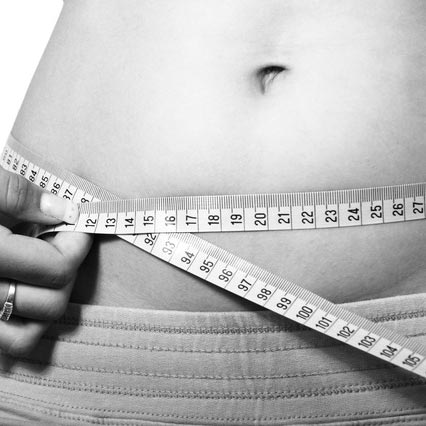
As swimsuit season approaches, our focus often switches to our belly fat. Belly fat is not only something to torment our inner beach goddess; it’s a dangerous indicator of what’s going on underneath. Each year brings new evidence that the fat lying deep within the abdomen is more perilous than the outer fat you can pinch with your fingers.
In most people 90% of body fat lies in the layer just under the skin (that area mocking our inner beach goddess). The remaining 10%, called visceral or abdominal fat, lies beneath the abdominal wall and is found in spaces surrounding the liver, intestines and other organs. Although this is a smaller proportion of body fat, it is a key player in health problems.
As women go through their middle years, their proportion of fat to body weight tends to increase more than it does in men. Also, fat storage begins favoring the upper body over the hips and thighs. Even if you don’t gain weight, your waistline can grow by inches as visceral fat pushes out against the abdominal wall.
Over the years, researchers have identified a host of chemicals that link visceral fat to a wide variety of diseases because visceral fat makes proteins called cytokines. Cytokines can trigger low-level inflammation which increases the risk of heart disease and other chronic conditions. Cytokines also are a precursor to another protein that causes blood vessels to constrict and blood pressure to rise.
The Good News
This all sounds a bit scary and depressing but the good news is that visceral fat is more readily metabolized and responds more efficiently to diet and exercise. The fat on hips and thighs may take a little more effort, unfortunately. As most things do, this all boils down to healthy, natural food choices and engaging in at least 30 minutes of moderate-intensity activity on most days.
A great way of eating for overall health is the Mediterranean diet. Notice, that is diet with a small d…not an uppercase fad D. Use it for lifestyle inspiration, then make it your own. Luckily, we happen to be very close to a large body of water (i.e. lots of fresh seafood) and farmer’s market season is upon us. It is a great time to start a healthy lifestyle!
Important Note on “Low-Fat” Commercial Foods
It is important to note that not all fats are harmful. Many fats such as olive oil, avocado, and wild-caught fish are important because they offer essential building blocks for our hormones and cell membranes. Commercial “Low Fat” food options often contain high levels of sugar and starch, further compounding our addiction to carbohydrates and sweets; leading to visceral weight gain. Moral is, be careful when making your choices and always lean towards natural, unprocessed foods.
More Reading
For more information on what was discussed here, please visit the links below.
- The Risks of Belly Fat – And How to Beat Them – WebMD
- Mediterranean diet: A heart-healthy eating plan – the Mayo Clinic
- The Most Dangerous Fat is the Easiest to Lose – HelloHealthy blog by MyFitnessPal



